In kitting a rifle, few things are as personal as your furniture choice. The ergonomics of your rifle should conform to your body, so everyone ends up with a different setup. In many ways, the AR15’s freedom of choice created an entire industry, as the variety of handguards, stocks, grips, and mounts allowed small, innovative manufacturers to shine.
But any time you have competitive products, you’ll find debate and conflict between fans. Everyone remembers the KeyMOD and M-LOK arguments from a few years ago. The two newest, lightest attachment systems clashed for the favor of shooters and military alike, while the quad-rail folks sipped sugar-free Monster and reminisced on the ol’ ‘Block 1’ days. Good times. Nowadays, most shooters recognize the benefits of all three handguard systems, but that’s just one of many similar disputes. To this day, shooters can argue foregrips day in and day out. As a result, there is a lot of confusion about the best foregrip for an AR15.
Our take? No foregrip style is universally better than any other, but each has its own nuances that can lead to situational discrepancies. Unlike handguards, foregrips can’t be drop-tested. The purpose of the foregrip is to provide the shooter with leverage and reduce recoil impulse, but recoil impulse depends on dozens of ulterior factors. In the end, we’re left with very little data and hundreds of compelling options. So where do we begin?
Let’s start with the classic: the vertical foregrip.
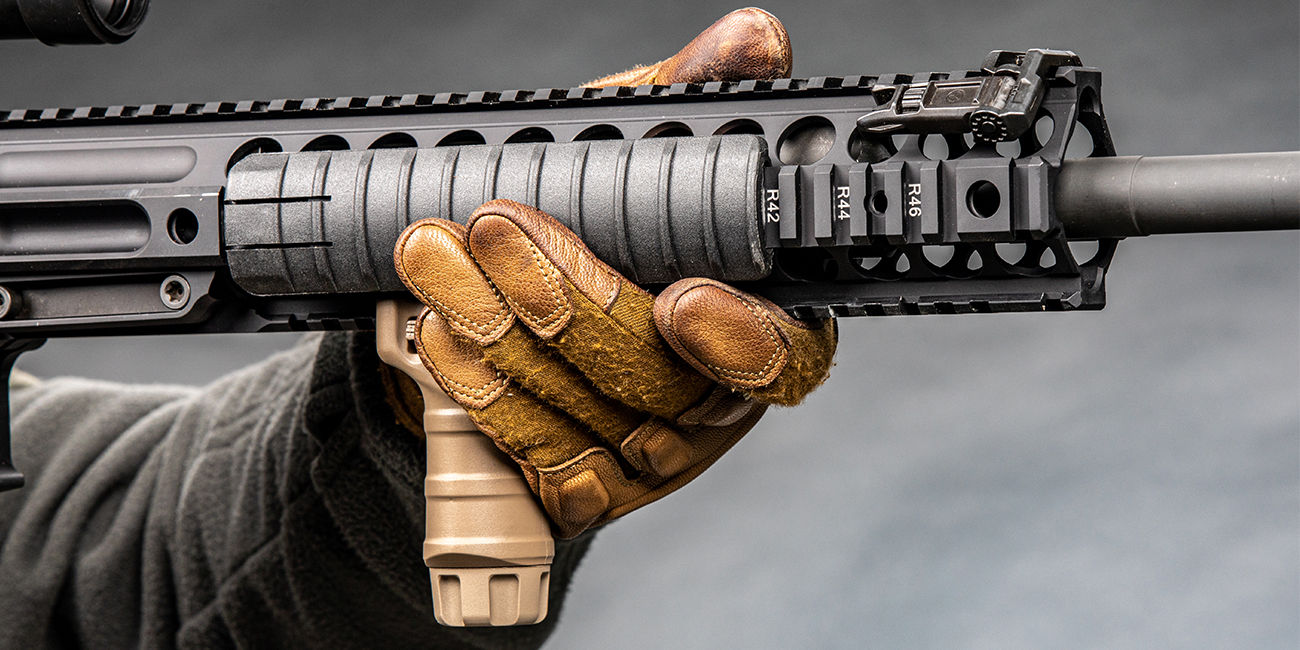
Vertical foregrips are versatile and come in countless sizes and configurations. From the old SOPMOD broomstick to the modern stubby, vertical grips are as diverse as they are practical, but the principle is always the same: reduce recoil by improving the shooter’s rearward leverage.When a shooter grips a bare handguard, they use the friction between their hand and the handguard to pull the rifle into their shoulder. By adding a foregrip perpendicular to the bore, the shooter can apply direct pressure and stabilize the rifle with greater efficiency. The result is reduced perceived recoil and a faster return-to-target, but early foregrip technique had a few problems.
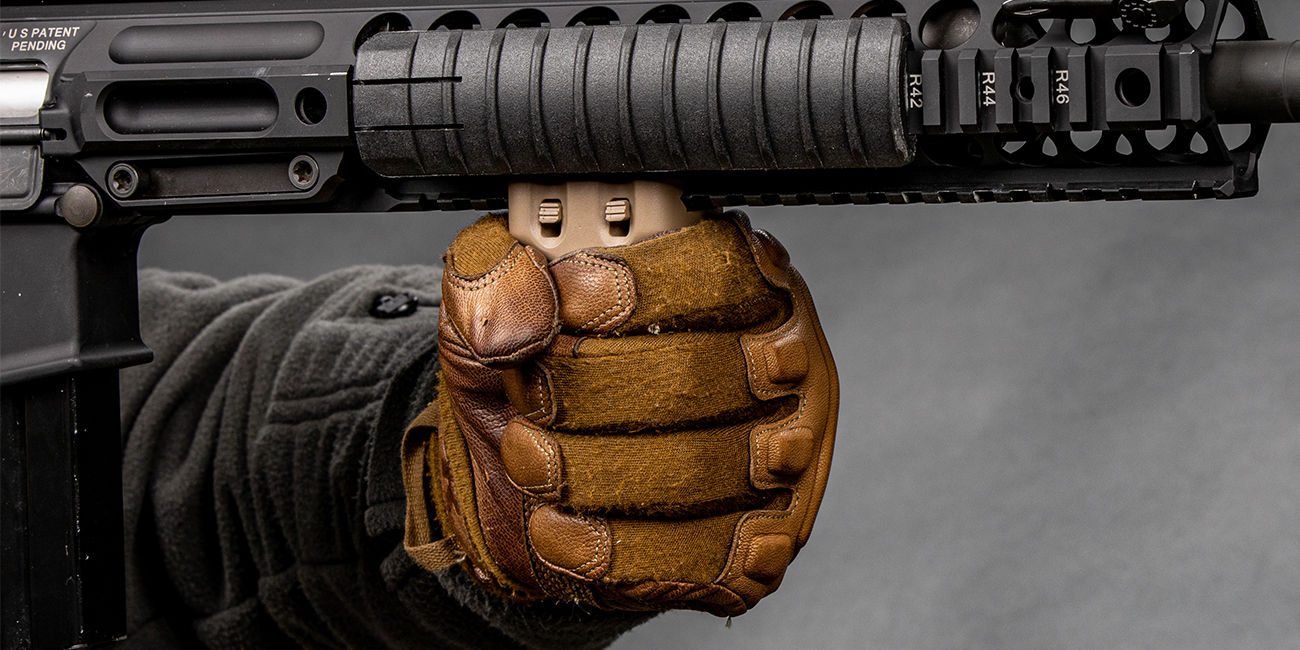
When the SOPMOD program added a full-size vertical foregrip to the M4A1, many soldiers clutched the grip with a balled fist. This technique can feel comfortable at first, but it instills some glaring problems for precision shooting. First, it pushes the support hand further from the muzzle, making it harder for shooters to recover from recoil when firing unsupported. Second, the shooter’s wrist is more susceptible to torque, so the subtle side-to-side recoil intensifies. Lastly, it required larger, heavier grips to provide real-estate for an entire hand.After some experimentation, most soldiers gravitated towards thumb-break technique, which sets four fingers on the grip and the thumb against the handguard. This is a significant improvement over the full-fist grip and greatly improves muzzle control, but current practice has gone one step further. By angling the support hand between the handguard and foregrip, shooters achieve greater stability without sacrificing muzzle control. This technique contributed to the recent popularity of stubby grips, such as Magpul’s MVG, which are now the most popular option on the market. Bravo Company offers their BCM GUNFIGHTHER vertical foregrips with a slight cant for added comfort, but some shooters flipped them around, claiming that it reduces muzzle rise. The merit of this configuration is still subject to intense debate across the internet.

Some vertical grips add benefits beyond size and angle. Tango Down’s vertical foregrips have waterproof storage built into the bottom, so you can keep batteries, matches, or lubricant onboard. Grip-Pods add a pair of bipod legs into the bottom of the vertical grip, so shooters can deploy them for enhanced support while prone. There is a lot of room for small features to be built into vertical grips, so products can look and feel very different depending on your needs.
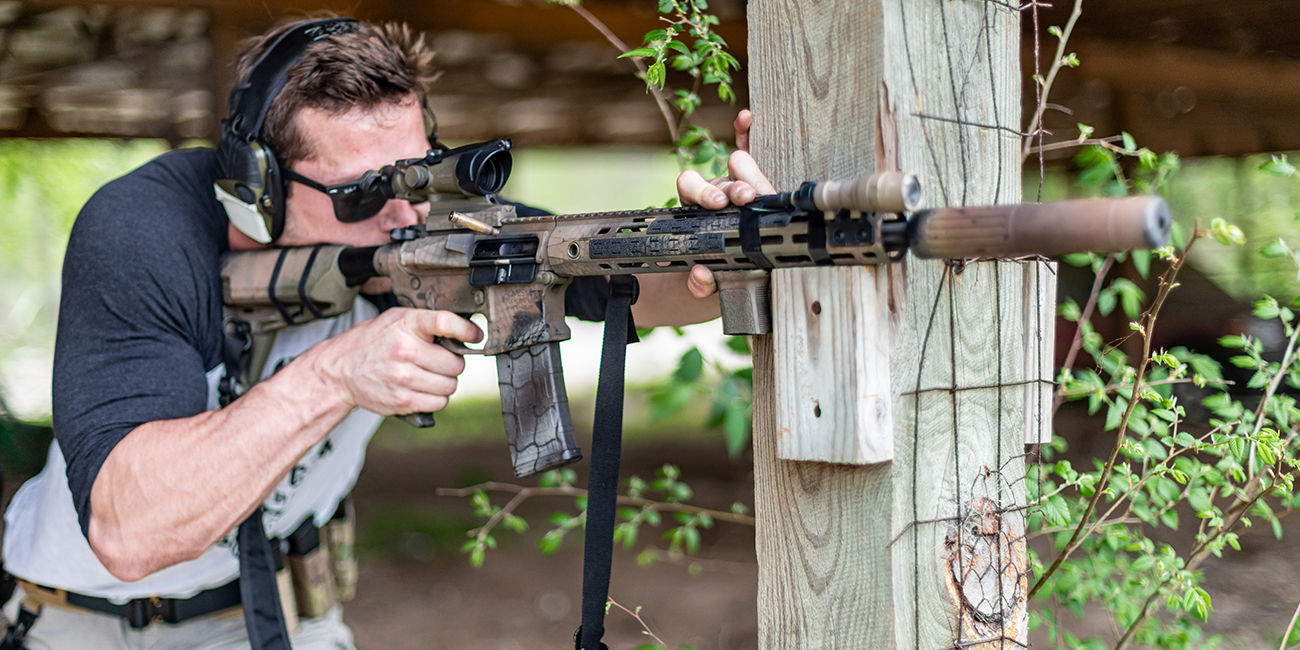
You can also brace a vertical foregrip against a surface or barricade to reduce recoil. While it will not be as precise as a bipod, bracing your rifle against cover can make a big difference, stabilizing your crosshairs on target for repeated accurate shots. Of course, this isn’t a feature exclusive to vertical foregrips, but a full perpendicular angle makes it much easier to maintain tension.Vertical grips obviously pack a lot of functionality, so their popularity is reasonable. That said, VFGs aren’t the only foregrips on the market.
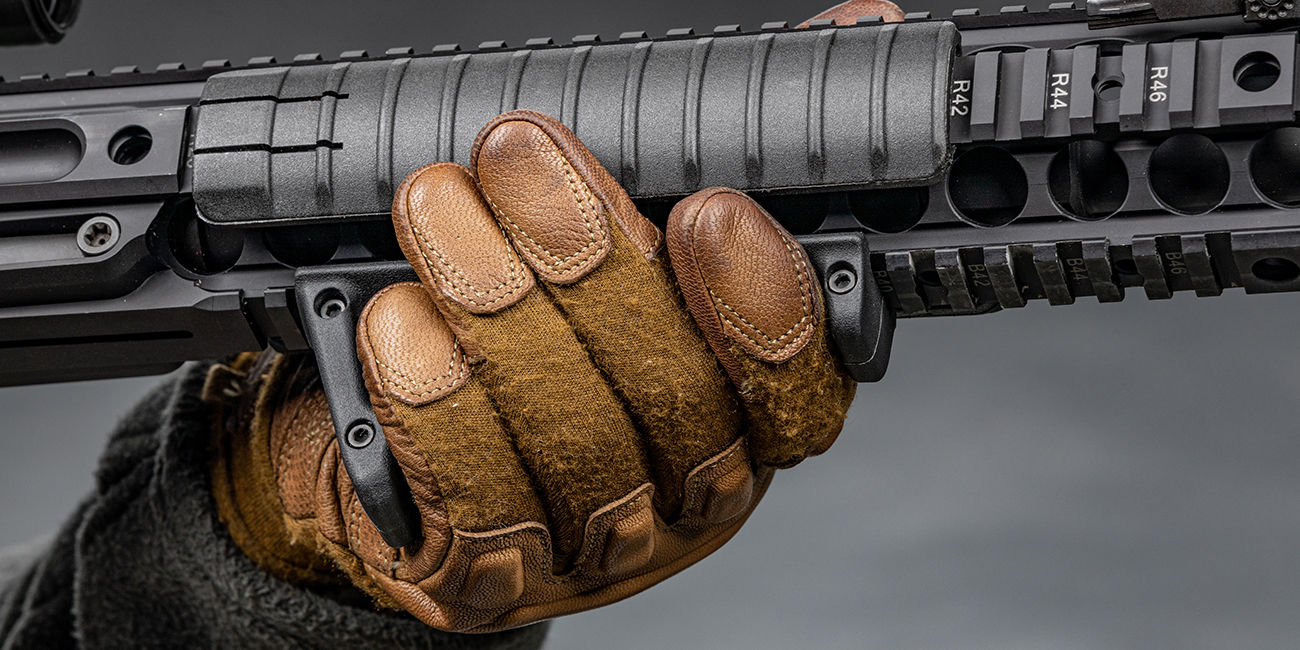
Angled foregrips are a more recent invention, popularized by the Magpul AFG. Like vertical foregrips, these foregrips come in a variety of sizes and designs, but the style is generally more minimalist.When used correctly, angled foregrips and vertical foregrips share a similar grip angle. The difference is that angled grips contour to the hand, while vertical grips have an aggressive 90-degree stop. This makes angled grips more intuitive, as there are very few wrong ways to hold it. Minimalist angled foregrips like the Seekins Precision K20 Angled Foregrip are lighter than their vertical counterparts too, but no foregrip is without compromise. Angled grips aren’t as good for bracing against cover, as any slip will cause your rifle to slide right over the barricade. You also won’t find any onboard storage options, but that may not matter depending on your setup.
All-in-all, angled foregrips provide a worthy alternative to the traditional vertical grip, especially for those who prefer the ergonomics and reduced weight. Still, for the minimalists out there, there’s one more foregrip option that’s even smaller: the handstop.
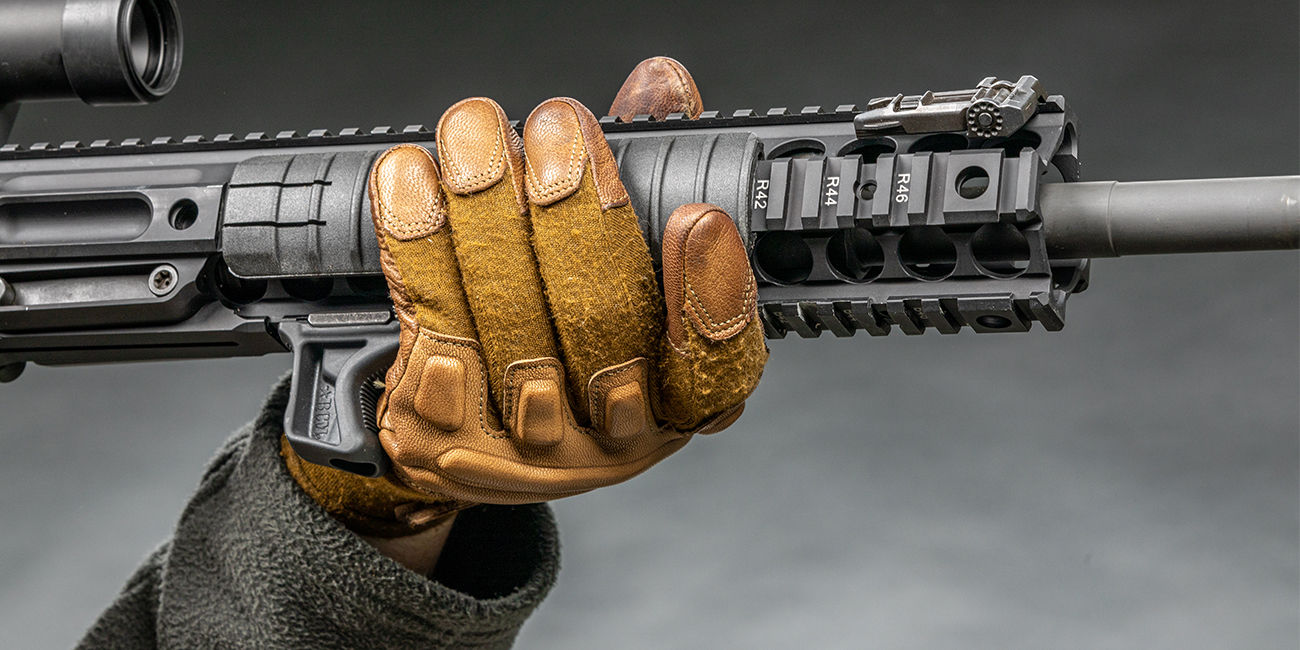
Handstops are the latest craze in the shooting world, and it’s easy to see why. They work great with a c-clamp grip, so shooters get great muzzle control while retaining their additional point of contact for added rearward support. Pictured above, the BCM KAG blurs the line between angled grips and handstops, providing a very slight incline into a very effective hook. The result is a comfortable hold that points naturally with negligible added weight.Given their simplicity, it’s hard to describe handstops beyond the obvious. If you normally shoot without a foregrip, a handstop will feel very natural, so little practice for effective use. You can grip the rifle as normal and pull it tight to your shoulder pocket. The handstop will act as a very subtle contact point at the edge of your hand to prevent you from slipping backward.
This simplicity is also the handstop’s primary weakness. On a short-barreled rifle, a vertical grip or angled grip will change your grip and move your thumb up and back. This makes it easier to access your flashlight or IR equipment, which take up a lot of space on the rail. Also, just like angled grips, handstops do not have any room for storage and can slip off certain surfaces if used for bracing.

As we said, every grip has a time and a place where it shines, and preference tends to dictate much of the choice. Some shooters value the utility of a vertical foregrip, while others prefer the comfort of an angled grip. Some folks just want a little bit of leverage, so they get a handstop and call it a day. If you know what you shoot best with, stick to the proven option.Ultimately, there is no right choice in every situation. You should experiment with the options to find the one that best matches your desired application. The best approach is to think hard about your shooting style and needs, then seek out a well-reviewed, industry-proven foregrip of choice. If you have friends with different foregrips, ask to try out their setup. Who knows what you might learn!
No matter your choice, we’ll be here to answer any questions. Our customer service team has plenty of experience with all three foregrip types, and they’re more than willing to help you find the right fit. No need to pick up the phone—we’ve got a live chat built right into our site. Just check the right side of your screen. You’ll see a little red button already waiting!



